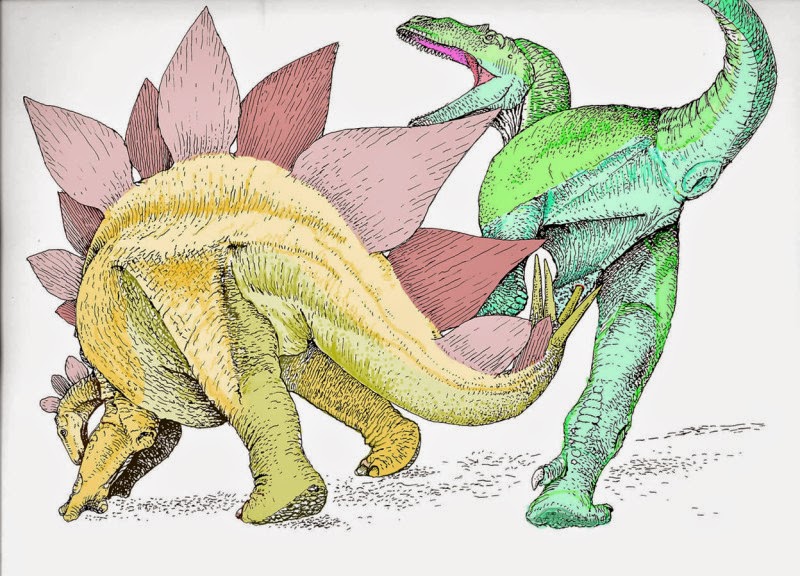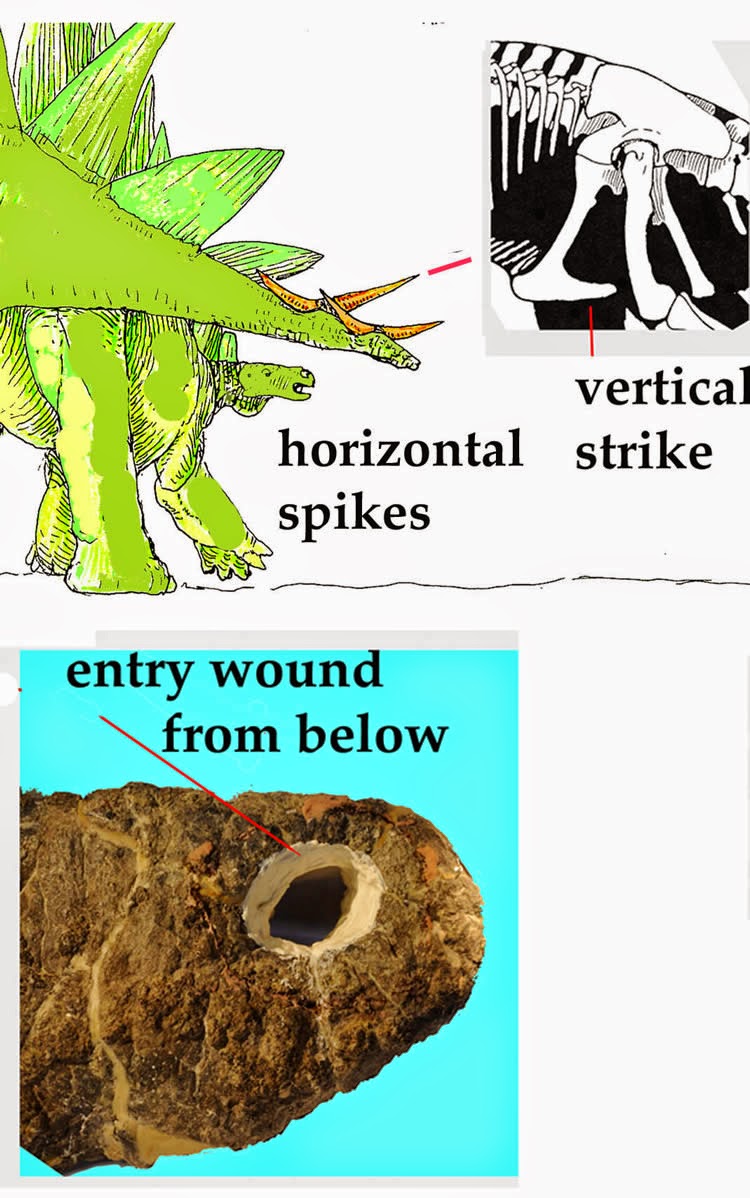
Stegosaurs might be portrayed as lumbering plant eaters, but they were lethal fighters when necessary, according to paleontologists who have uncovered new evidence of a casualty of stegosaurian combat. The evidence is a fatal stab wound in the pubis bone of a predatory allosaur. The wound — in the conical shape of a stegosaur tail spike — would have required great dexterity to inflict and shows clear signs of having cut short the allosaur’s life.
“A massive infection ate away a baseball-sized sector of the bone,” reports Houston Museum of Natural Science paleontologist Robert Bakker and his colleagues, who present a poster on the discovery on Tuesday at the meeting of the Geological Society of America in Vancouver, B.C. “Probably this infection spread upwards into the soft tissue attached here, the thigh muscles and adjacent intestines and reproductive organs.” The lack of any signs of healing strongly suggests the allosaur died from the infection.
Similar wounds are seen in rodeo cowboys or horses when they are gored by longhorns, Bakker said. And since large herbivores — like longhorn cattle, rhinos and buffalo — today defend themselves with horns, it’s reasonable to assume spiky herbivorous dinos did the same. A big difference is that stegosaurs wielded their weapon on their tails rather than their heads. Skeletal evidence from fossil stegosaurs suggests their tails were more dextrous than most dinosaur tails.

“They have no locking joints, even in the tail,” Bakker explained. “Most dinosaur tails get stiffer towards the end.” But stegosaurs had massive muscles at the base of the tails, flexibility and fine muscle control all the way to the tail tip. “The joints of a stegosaur tail look like a monkey’s tail. They were built for 3-dimensional combat.”
In order to deliver the mortal wound to the allosaur, a stegosaur would have had to sweep its tail under the allosaur and twist the tail tip, because normally the spikes point outward and backward. That would have been well within the ability of a stegosaur, Bakker said.
The fighting style and skill of stegosaurs should come as no surprise to anyone familiar with the dinosaur battle scene in the 1940 Disney animated film Fantasia, said Bakker. That segment of the movie shows a beefed up allosaur attacking a stegosaur. The stegosaur delivers a number of well aimed tail blows at the predator, but loses the fight. The Fantasia stegosaur tail dexterity appears to be accurate, he said. But he questions the stegosaur’s loss in the end. “I think the stegosaur threw the fight,” he said. On the other hand, he points out stegosaurs had among the smallest brains for its body size of any large animal, ever.
Note: The above story is based on materials provided by Geological Society of America.










